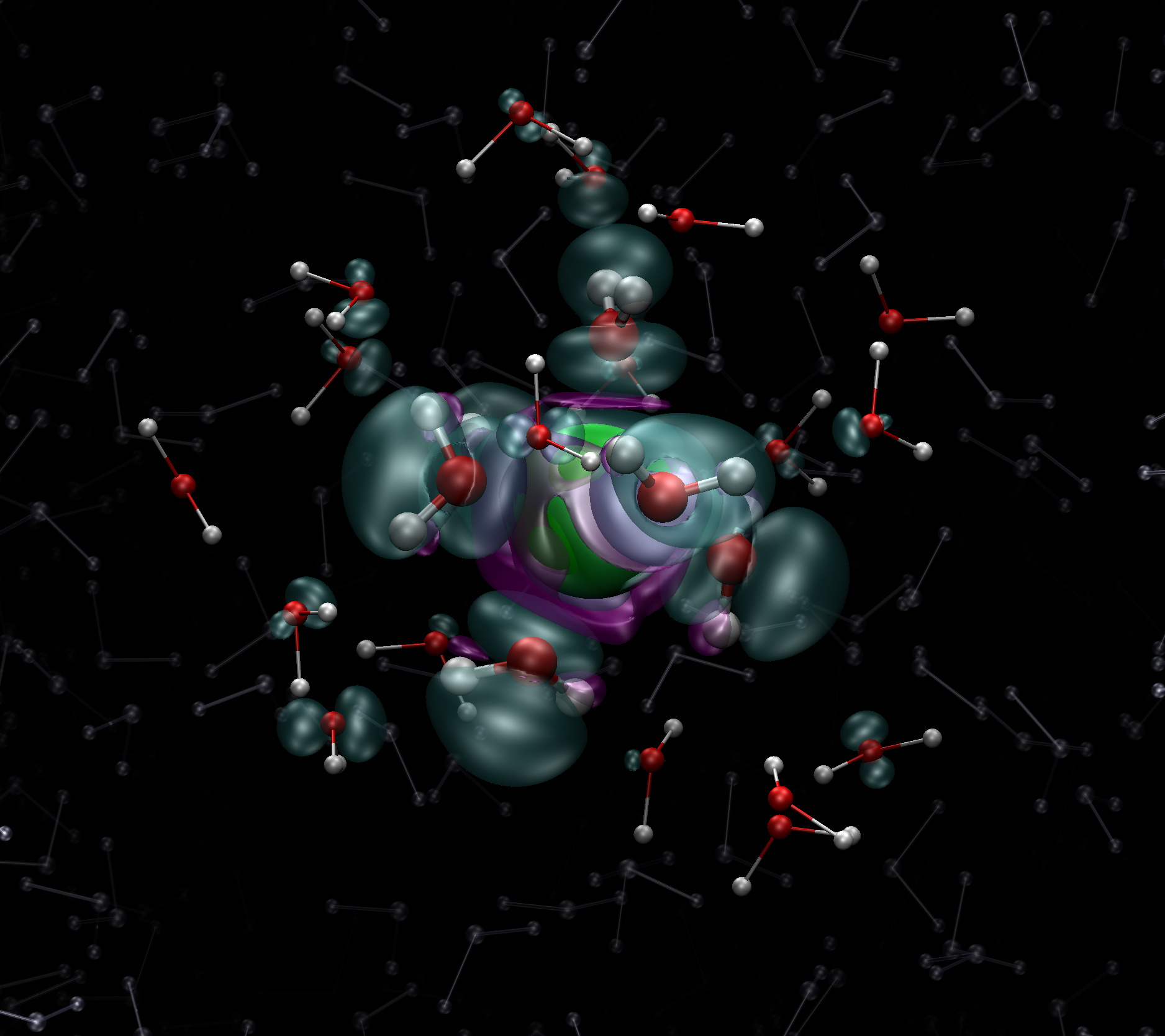


NMR is finding increasing use for electronically open-shell systems in materials and environmental science, e.g., in nanomagnets, detection of metal ions, and sensitive magnetometry. The large magnetic moment of the unpaired electron(s) leads to both large chemical shift and paramagnetic relaxation enhancement (PRE). pNMR theory is less developed as compared to conventional NMR, with systematic first-principles methods only emerging. We are investing a significant effort in the pNMR parameters of nuclear shielding, spin-spin coupling and PRE, to increase the analysis potential of pNMR. The findings include a consistent first-principles modus operandi for shifts and couplings in transition-metal complexes and its point-dipole approximation that allows very large biological and materials systems to be calculated ab initio.
The current research topics include generalization of the pNMR shift theory to employ the pseudospin formulation, shift theory of exchange-coupled systems, exchange couplings and pNMR shifts in layered double hydride materials including zero and/or one-dimensional molecular magnets, 129Xe shifts in self-organized paramagnetic nanocages, and chemical shifts in transition-metal and lanthanide complexes.
 Figure 1: Electronic spin density of a Ni(II) ion in aqueous solution with the water molecules of the first solvation shell explicitly illustrated.The illustration is of an instantaneous configuration extracted from a molecular dynamics simulation. [Mares, Liimatainen, Pennanen, Vaara, J. Chem. Theory Comput. 7, 3248 (2011)]
Figure 1: Electronic spin density of a Ni(II) ion in aqueous solution with the water molecules of the first solvation shell explicitly illustrated.The illustration is of an instantaneous configuration extracted from a molecular dynamics simulation. [Mares, Liimatainen, Pennanen, Vaara, J. Chem. Theory Comput. 7, 3248 (2011)]
 Figure 2: The point-dipole approximation makes it possible to calculate pNMR shifts of an entire metalloprotein ab initio. [Benda, Mares et al. Angew. Chemie Int. Ed. 55, 14713 (2016)]
Figure 2: The point-dipole approximation makes it possible to calculate pNMR shifts of an entire metalloprotein ab initio. [Benda, Mares et al. Angew. Chemie Int. Ed. 55, 14713 (2016)]
 Figure 3: Principle of theoretical prediction of pNMR shielding tensors based on a parameterization of the ground multiplet by an EPR Hamiltonian. [Vaara, Rouf, Mares, J. Chem. Theory Comput. 11, 4840 (2015)]
Figure 3: Principle of theoretical prediction of pNMR shielding tensors based on a parameterization of the ground multiplet by an EPR Hamiltonian. [Vaara, Rouf, Mares, J. Chem. Theory Comput. 11, 4840 (2015)]